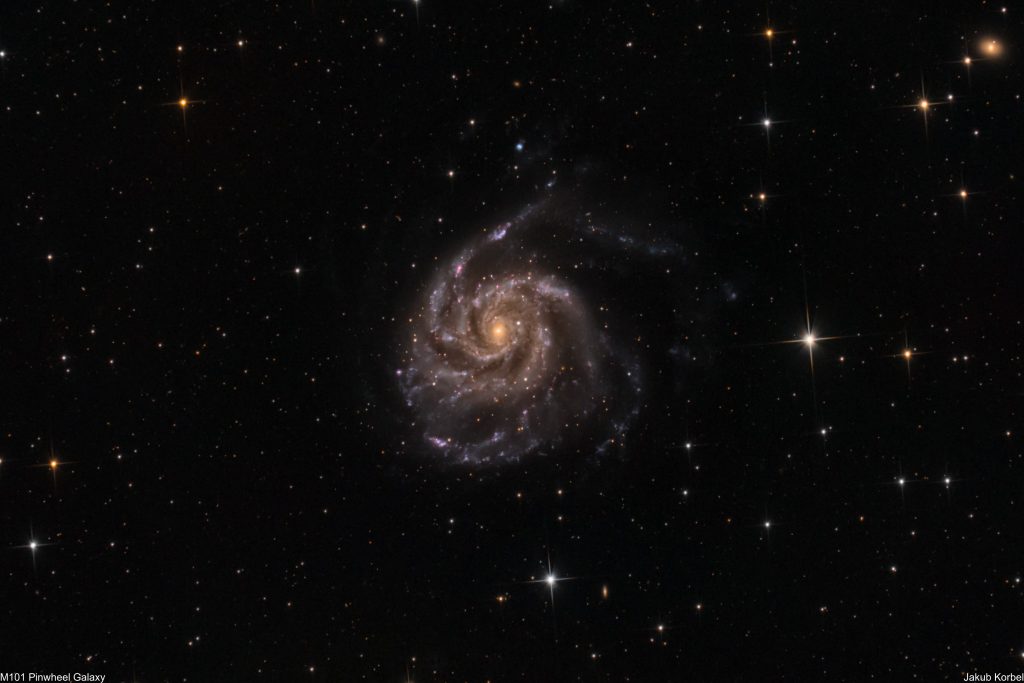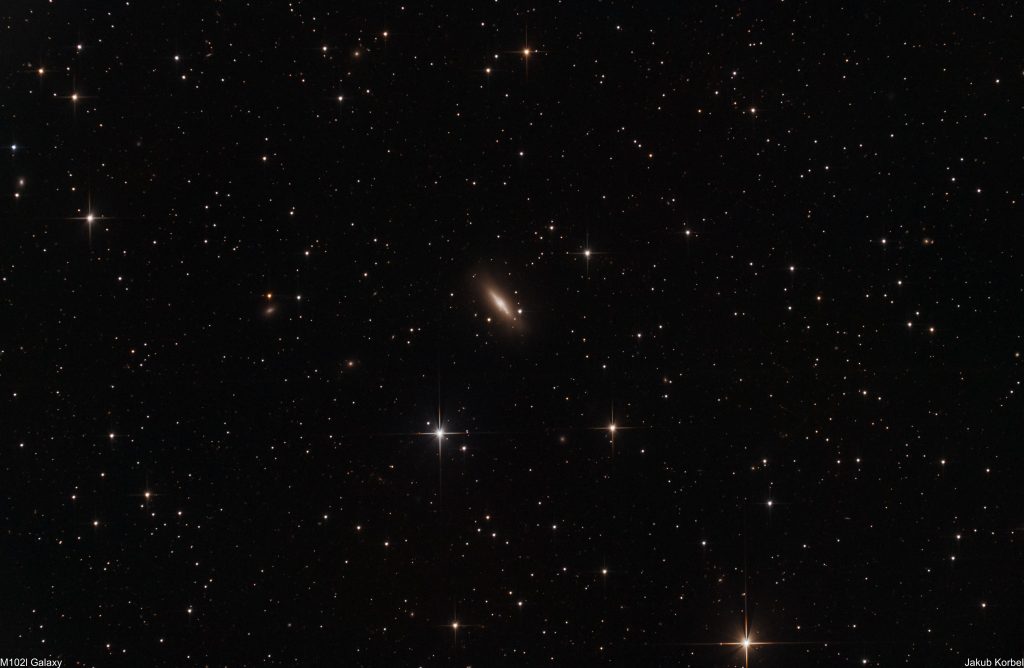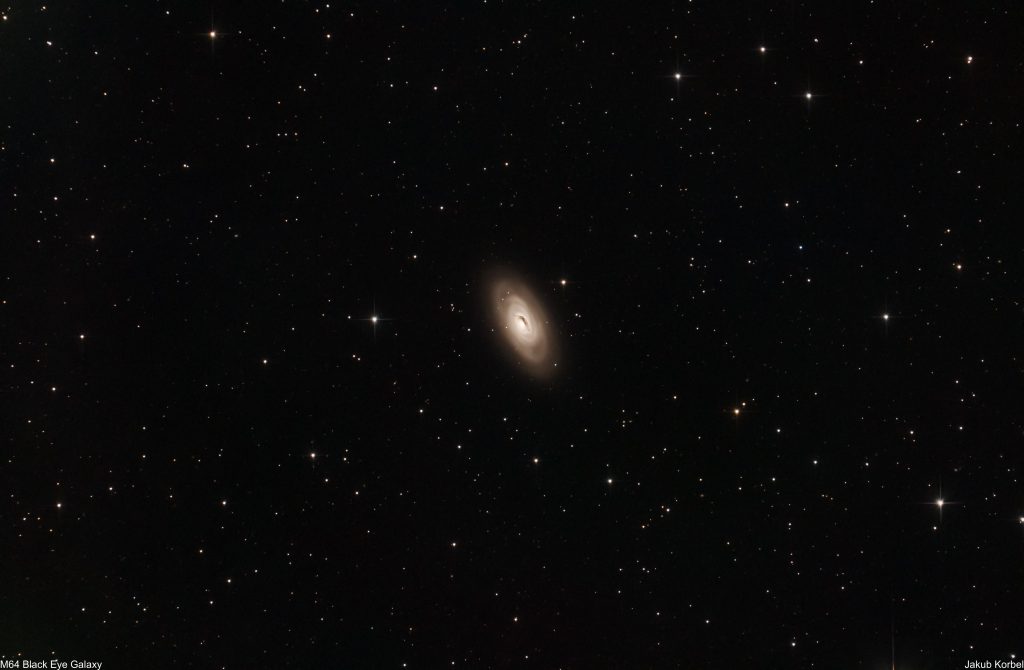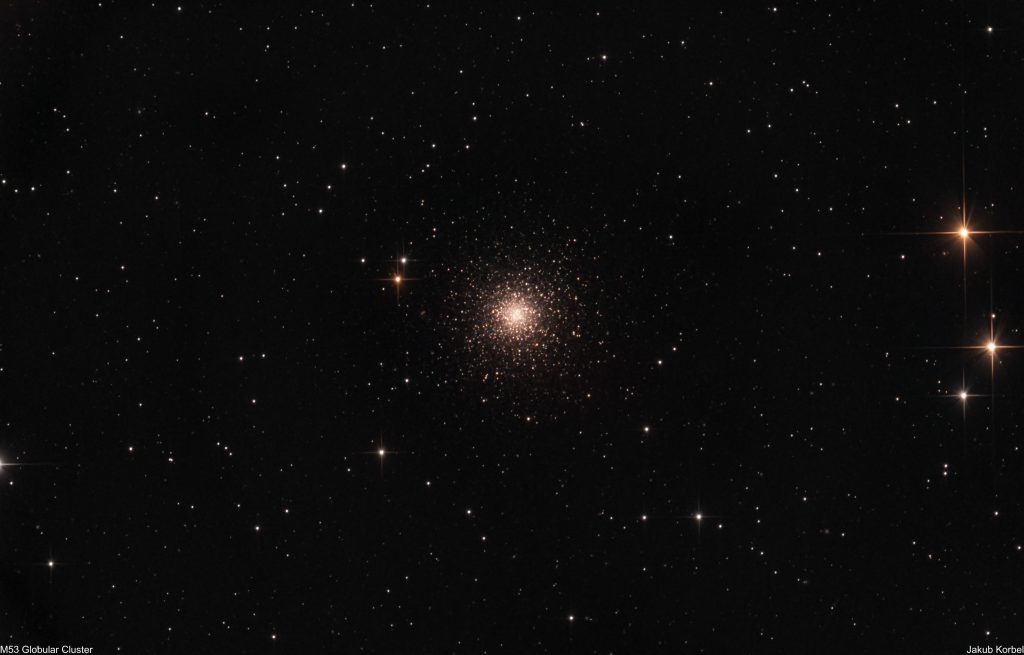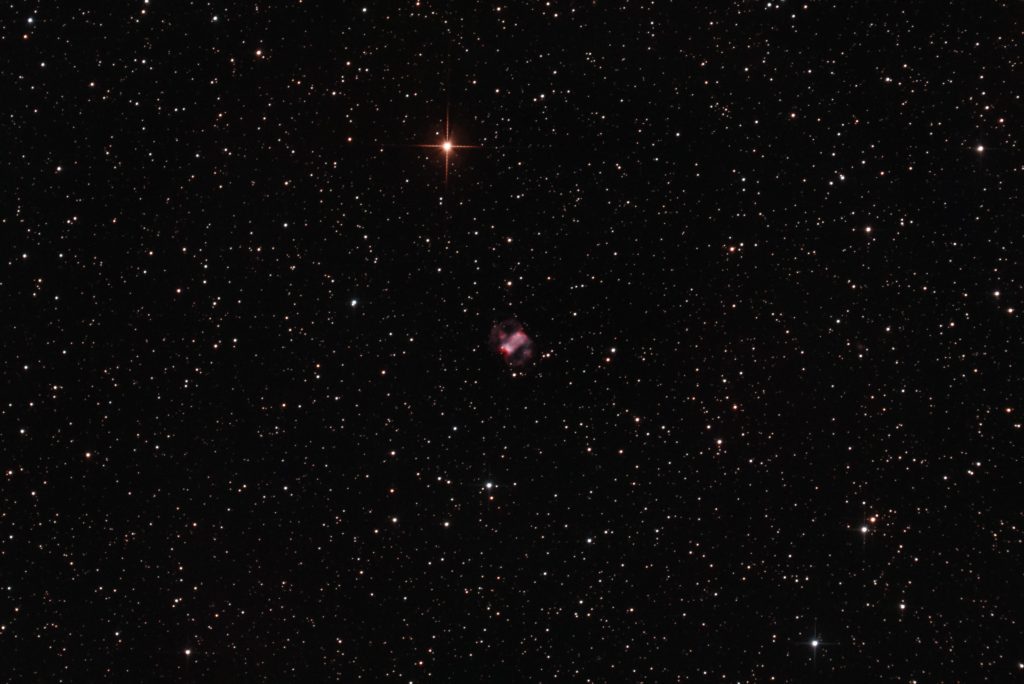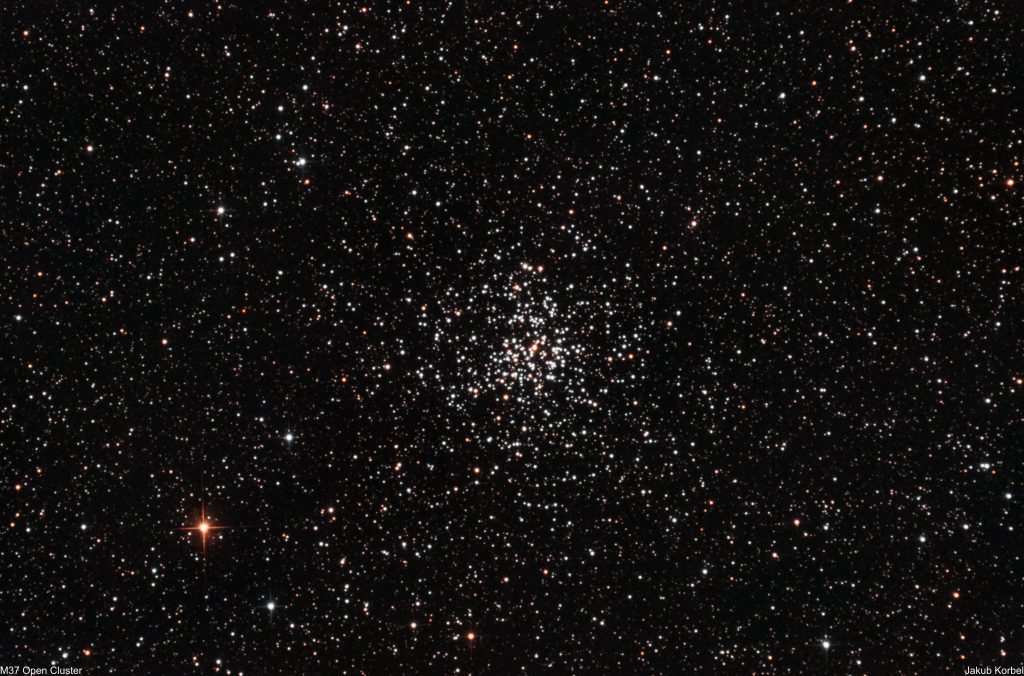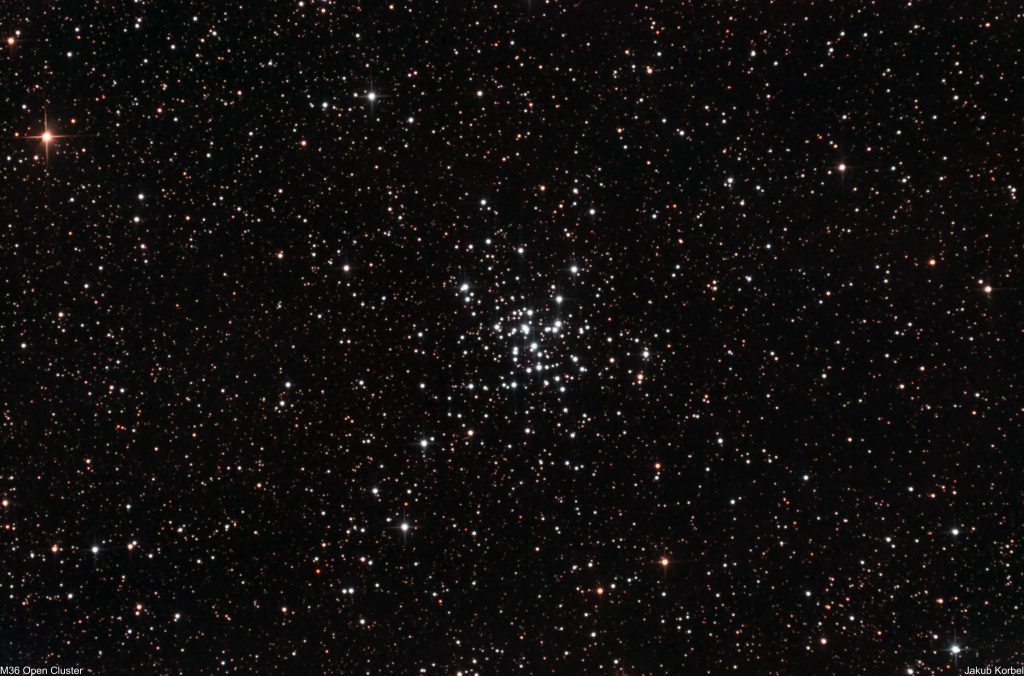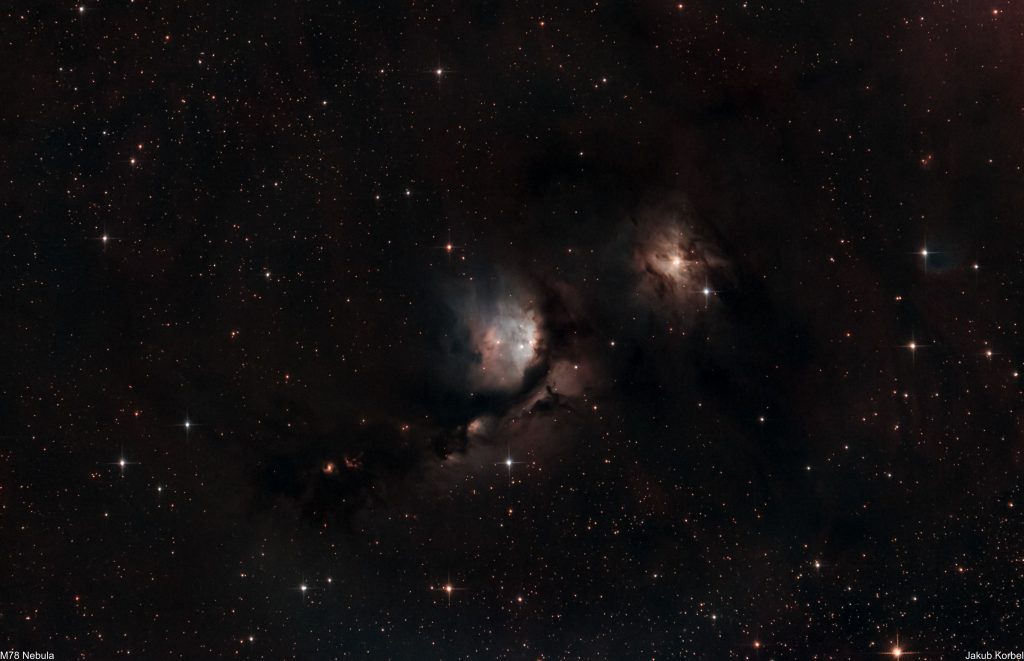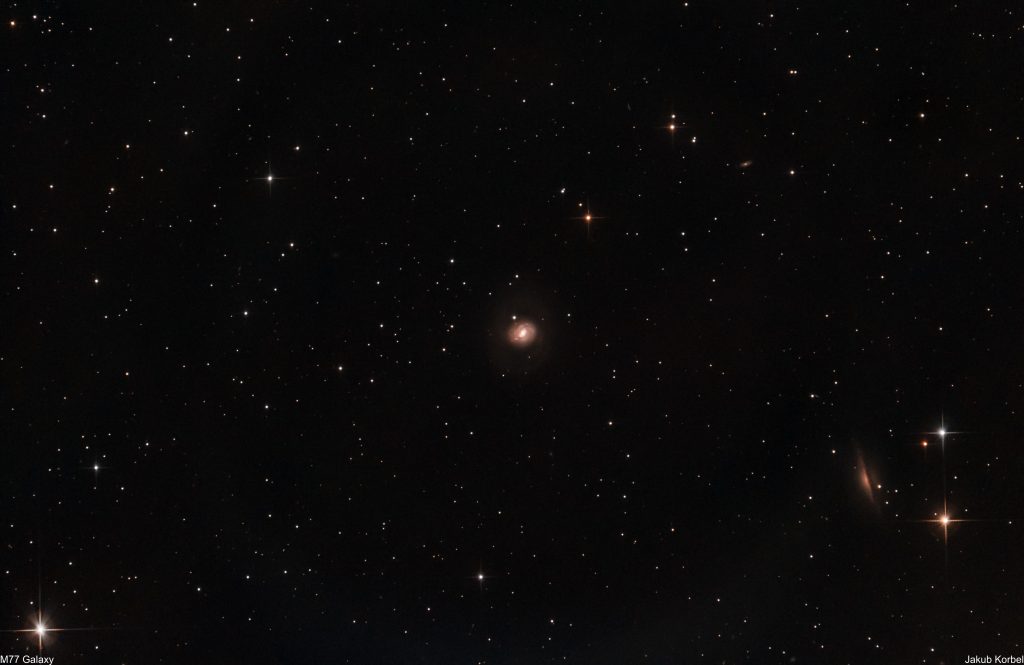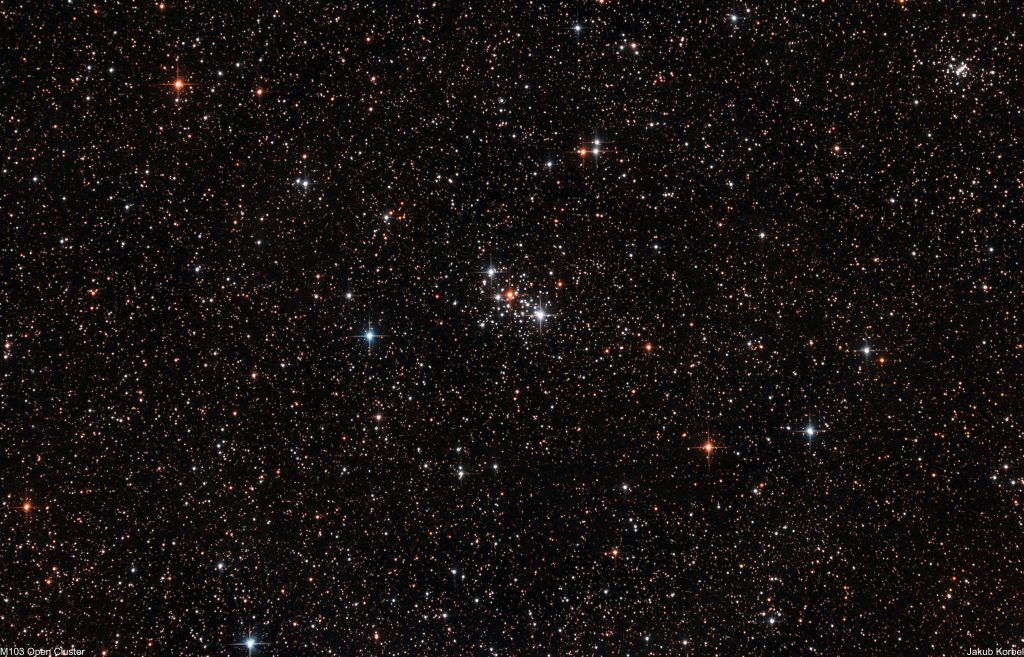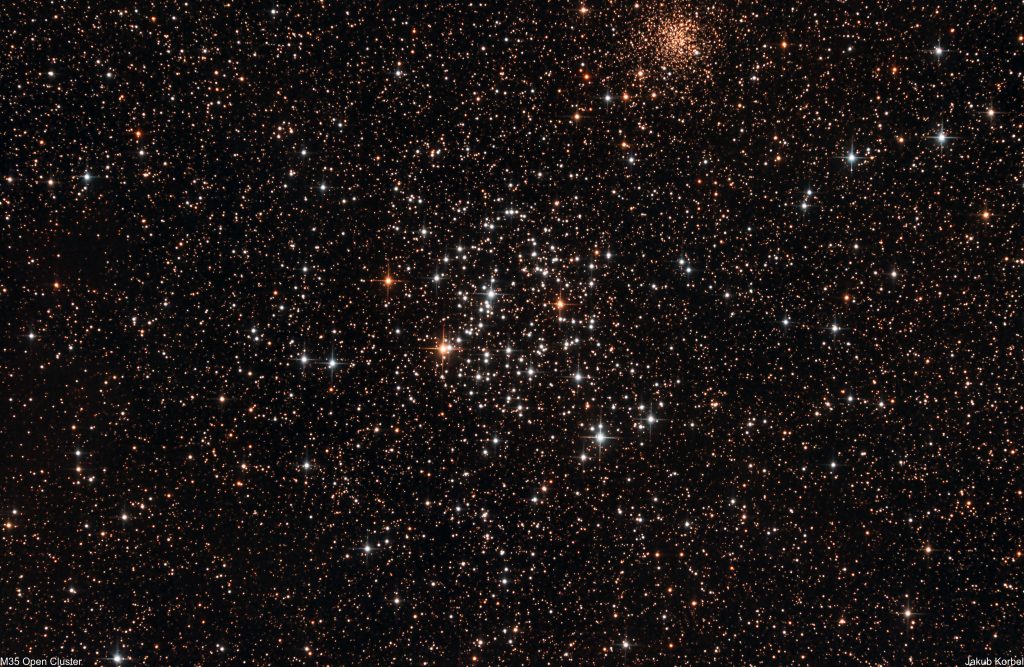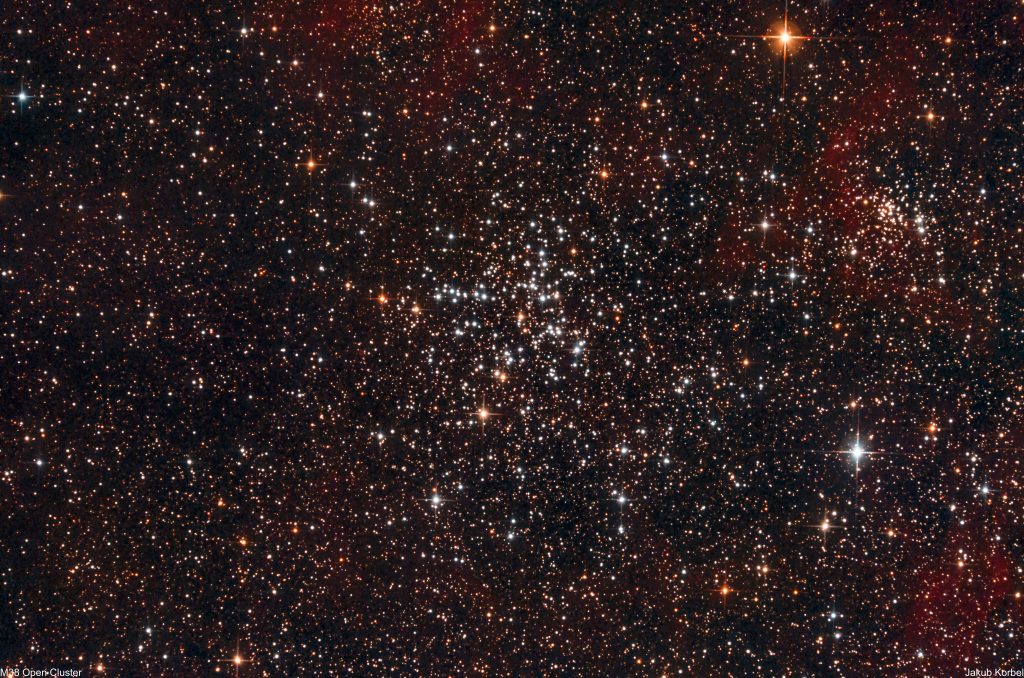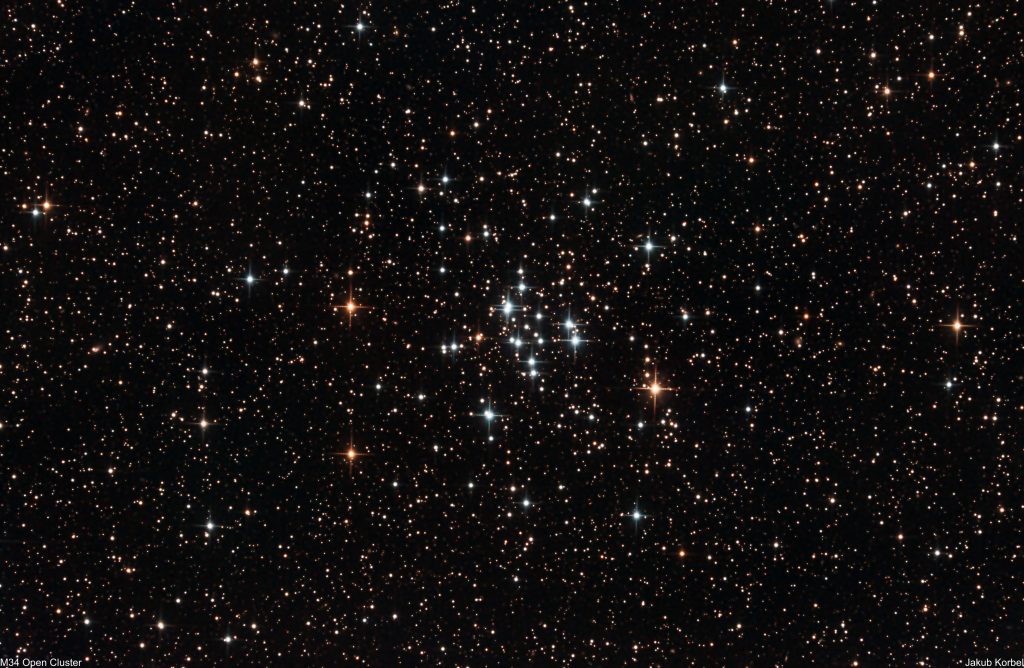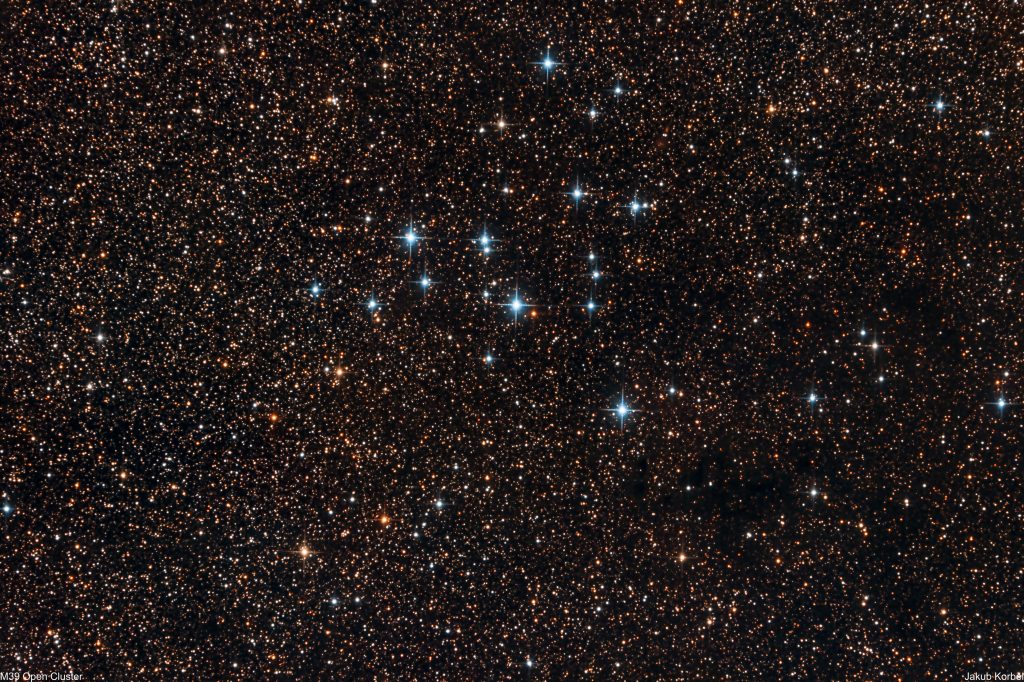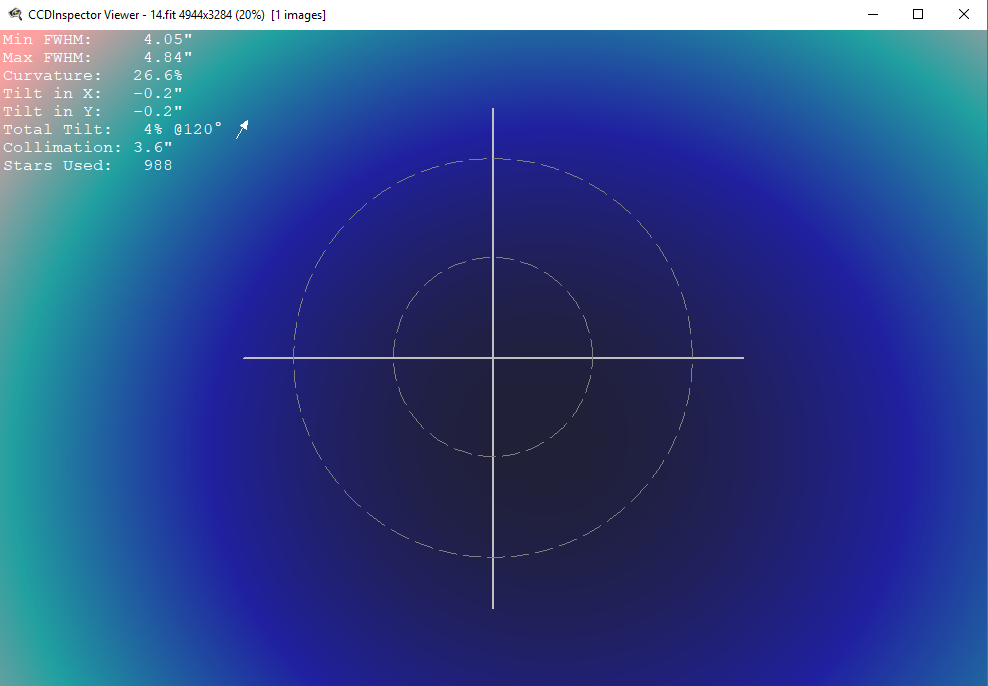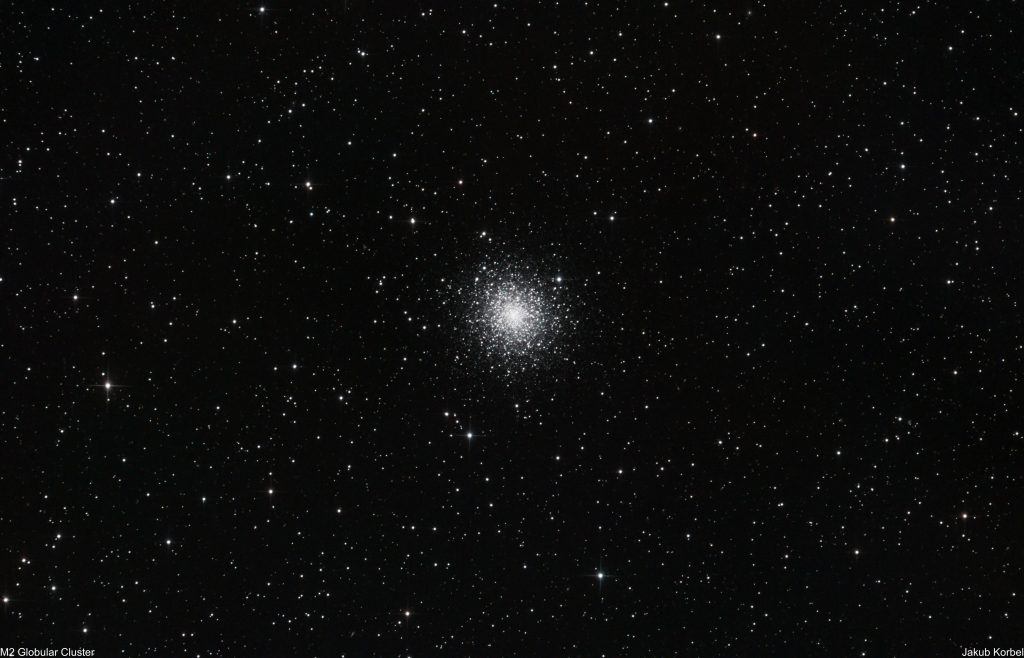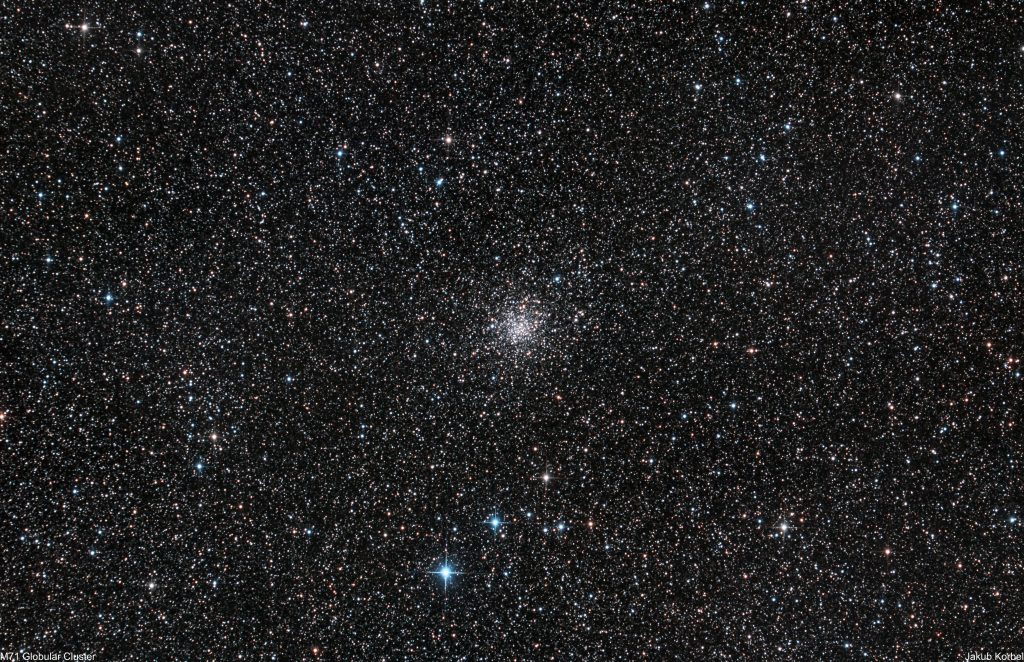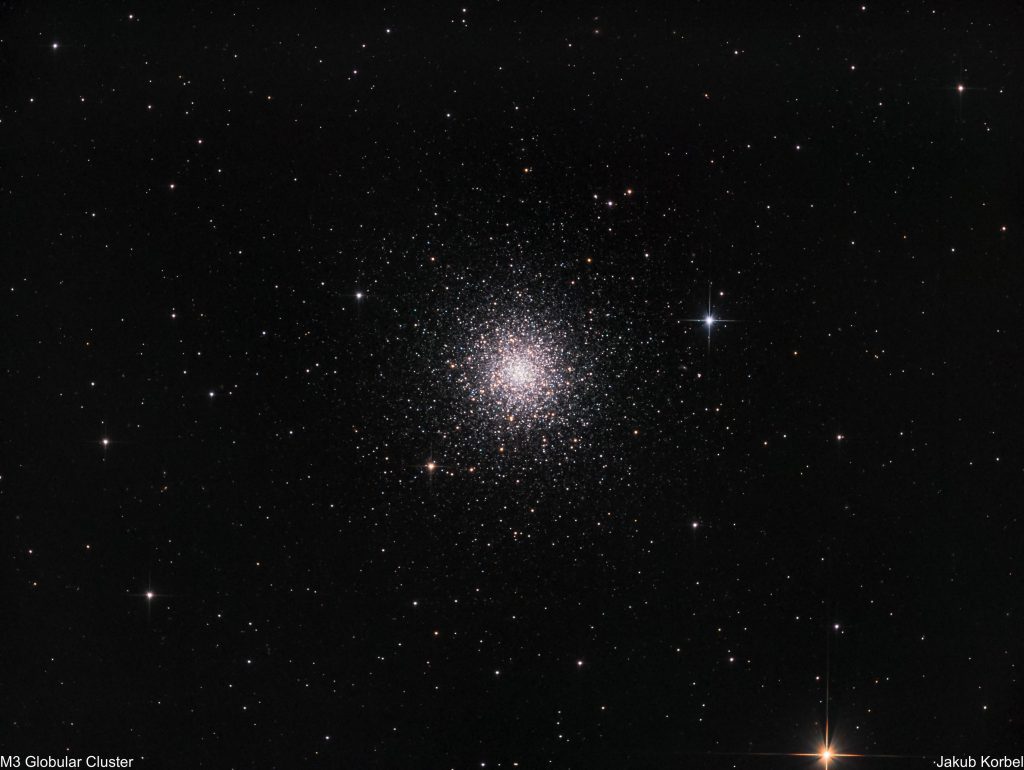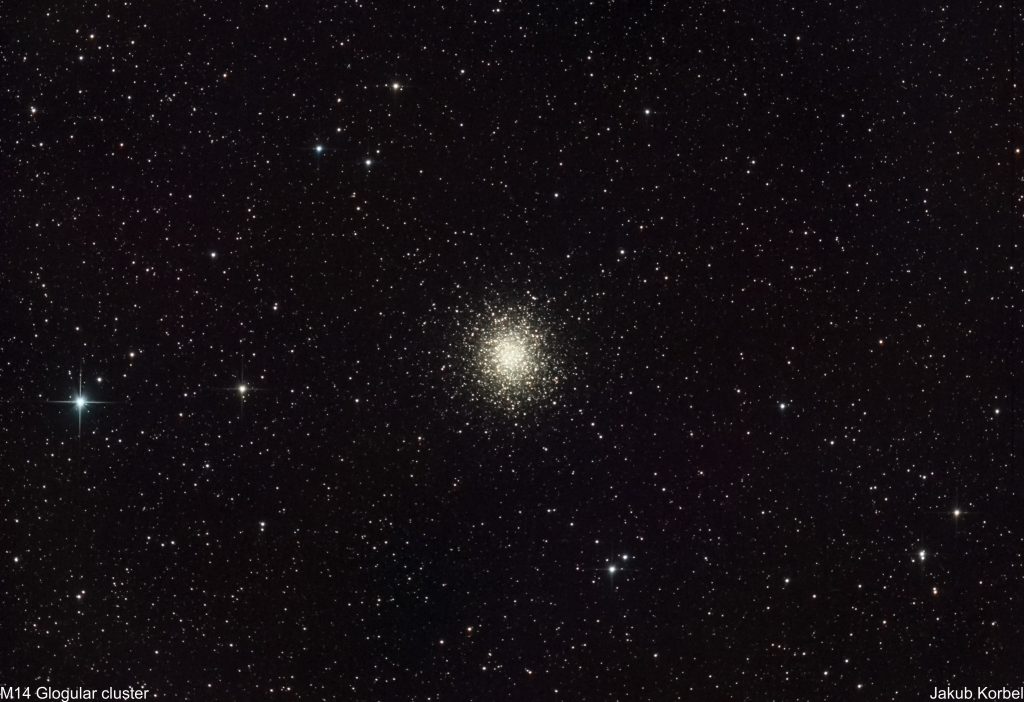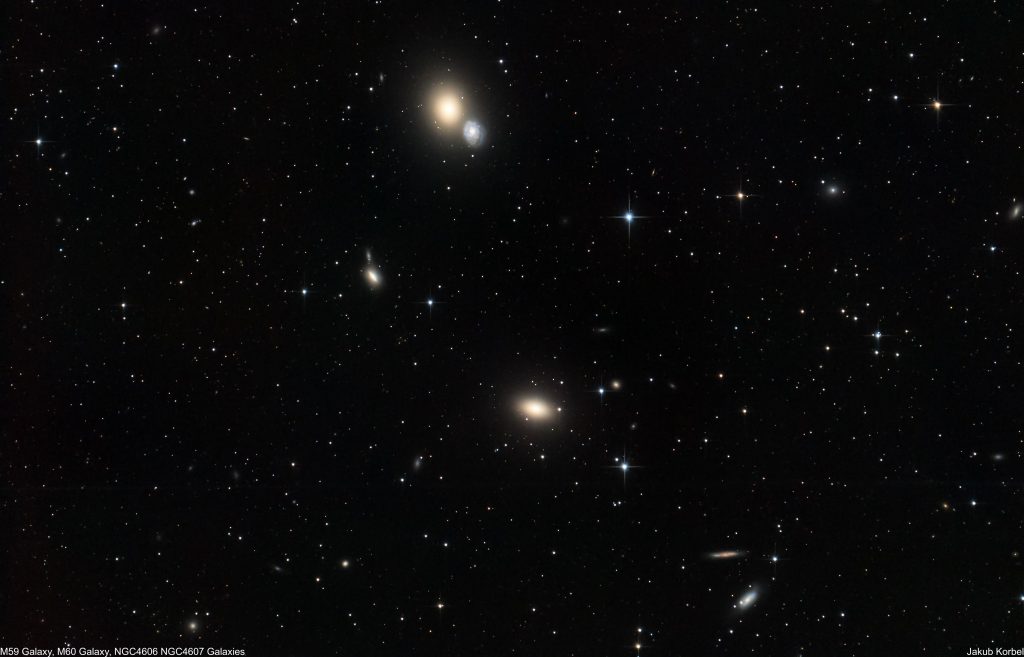Messier 40 is a double star located in constellation Ursa Major (in the middle of the picture). Charles Messier was searching for the nebula in this part of the sky, which was observed by Johannes Hevelius. He was unable to locate any nebulous object, but he found this double star and catalogued them under the number 40. Double star should be a system of two stars, which are bonded by the gravity, but the latest measurements demonstrated that these two stars are close to each other only visually and they are completely unrelated.
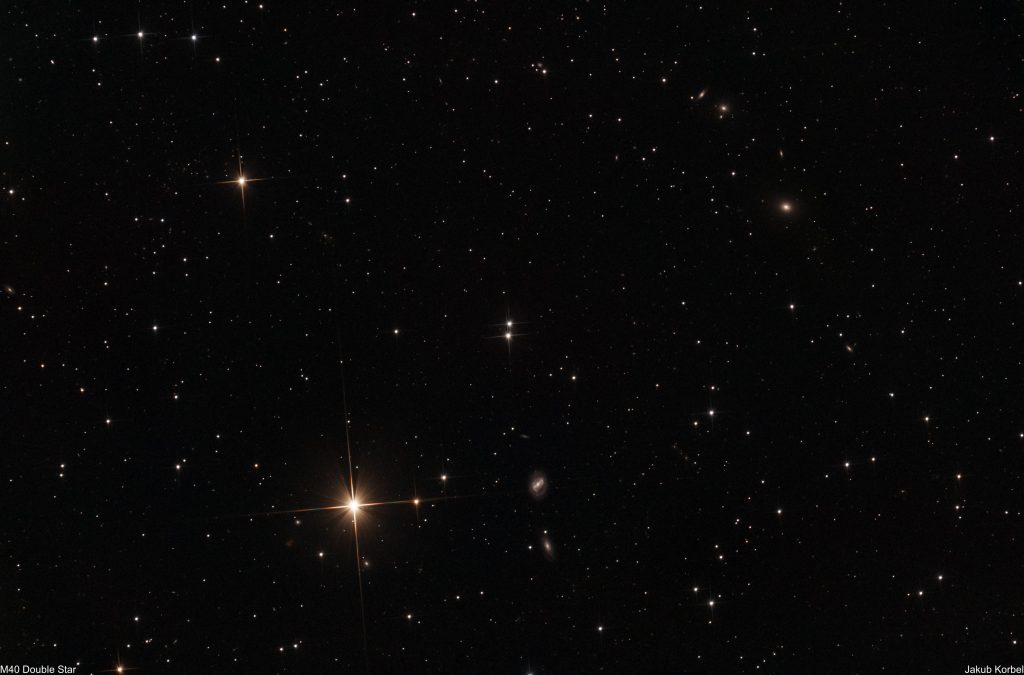
Technical details:
| Telescope | Newton 254/1000 mm |
| Aperture | 254 mm |
| Focal length | 1060 mm |
| Mount | Gemini G53f |
| Autoguiding | ZWO 174MM, TS 60/240 mm |
| Camera | ZWO 071 Pro @-10°C |
| Corrector | Explore Scientific HR coma corrector |
| Filters | Astronomik L-1 - UV IR Block Filter |
| Exposure | 40x120s, Gain 94, bin 1x1, |
| Date | 2019-06-01 |

